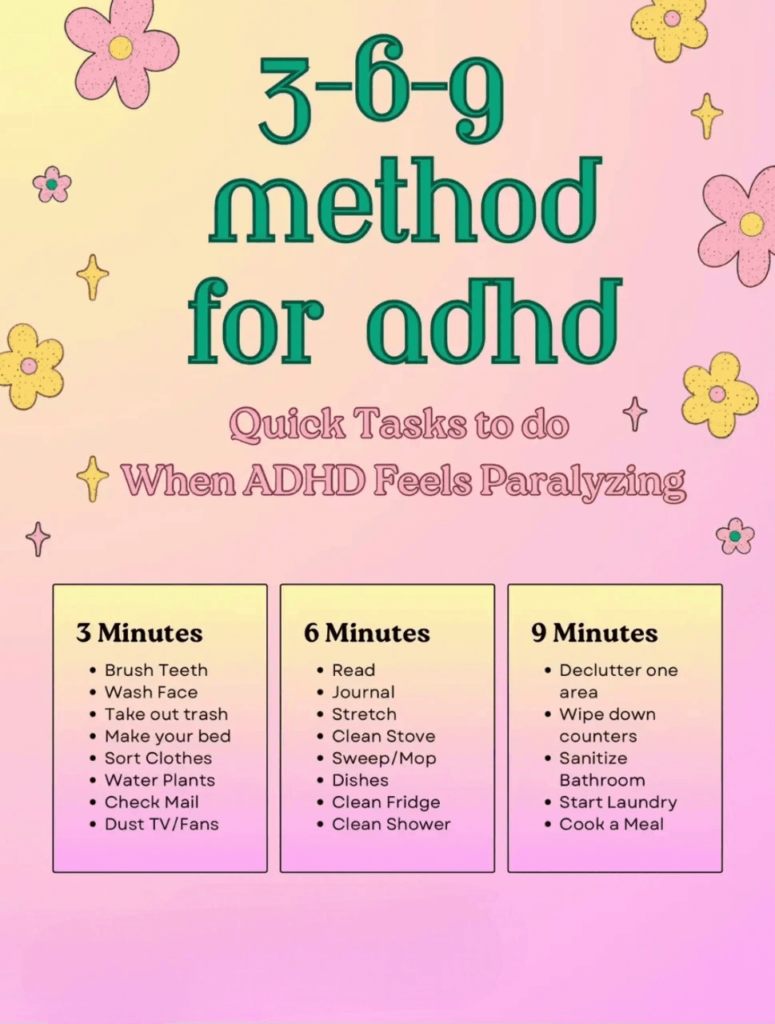Attention Deficit Hyperactivity Disorder (ADHD) can feel like living in a constant state of controlled chaos.
Our brains, wired differently, struggle with focus, organization, and staying on task.
Simple routines can become insurmountable hurdles, and the thought of creating a daily structure can be paralyzing.
But fear not, fellow traveler on the ADHD path! With a few tweaks and some understanding of how our brains work, we can harness the power of routine to create a calmer, more productive life.

Why Routines Matter for the ADHD Brain
Routine provides a much-needed sense of predictability and structure for the ADHD brain.
It reduces decision fatigue – the mental exhaustion caused by having to make too many choices throughout the day.
When we have a set schedule for waking up, getting ready, working, and taking breaks, we free up mental space to focus on the tasks at hand.
Routines also help with time management, a common challenge for those with ADHD.
By scheduling specific tasks for specific times, we can avoid procrastination and the last-minute scramble that often comes with it.
Additionally, routines can be calming for the ADHD brain. Knowing what to expect throughout the day can reduce anxiety and create a sense of control.
Building a Routine: From Overwhelm to “Aha!”
The prospect of crafting a detailed routine from scratch can be daunting. Here’s the secret: it doesn’t have to be complicated! Here are some steps to get you started:
- Start Small: Don’t try to overhaul your entire life overnight. Begin by focusing on one or two areas that cause you the most difficulty, such as mornings or evenings.
- Identify Your Needs: What are your specific challenges? Do you struggle with getting out of bed? Finishing chores? Sticking to deadlines? Once you identify your weak spots, you can tailor your routine to address them.
- Embrace the Power of “Chunking”: Break down large tasks into smaller, more manageable chunks. For example, instead of “clean the house,” list specific tasks like “dust living room,” “vacuum bedrooms,” and “mop kitchen floor.” This makes the task seem less daunting and allows you to experience the satisfaction of completing smaller goals.
- The 3-6-9 Method: This handy tool is a great way to jumpstart your routine when you’re feeling overwhelmed. Set a timer for 3 minutes and complete a quick, easy task. Once completed, set the timer for 6 minutes and tackle a slightly longer task. Finally, set the timer for 9 minutes and complete a more involved task. This method helps you get started and build momentum.
- Schedule Breaks: Our brains crave novelty and movement. Schedule regular breaks throughout your day to get up and move around. Take a walk, do some stretches, or engage in a short burst of physical activity.
Tools and Tech to the Rescue
Technology can be a powerful ally in the fight against ADHD. Here are some apps and tools that can help you build and maintain your routine:
- Visual Timers:Traditional timers can be helpful, but visual timers, with their physical representation of time remaining, can be even more effective for the ADHD brain.
- To-Do List Apps:There are countless to-do list apps available. Look for one that allows you to break down tasks, set reminders, and track your progress.
- Calendar Apps:Use a calendar app to schedule all your appointments, tasks, and breaks. This way, you have a central location to see your entire day at a glance.
- Focus Apps: These apps can help block distracting websites and social media, allowing you to stay focused on the task at hand.
The Power of Positive Reinforcement
We all respond better to positive reinforcement than punishment.
As you build your routine, reward yourself for completing tasks and sticking to your schedule.
This could be anything from a short break to enjoy a favorite hobby to indulging in a small treat.
Embrace Flexibility: It’s Not Set in Stone
Life doesn’t always go according to plan, and that’s okay.
The key is not to get discouraged if you have a setback. Remember, your routine is a tool, not a rigid rulebook. Be flexible and adjust your schedule as needed.
The important thing is to keep moving forward and celebrate your progress, no matter how small.
Building a routine for the ADHD brain takes time and effort, but the rewards are significant.
With a little planning and the right tools, you can create a structure that helps you navigate your day with more focus./
